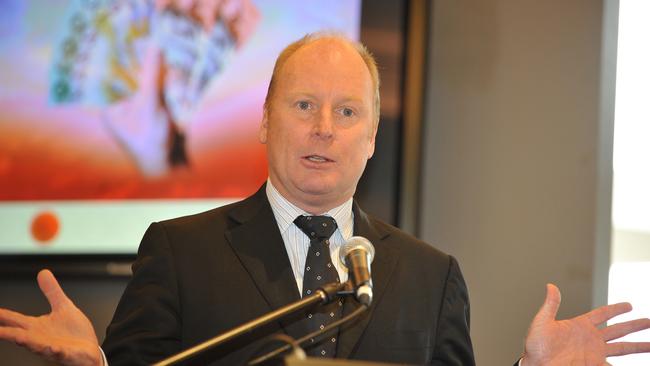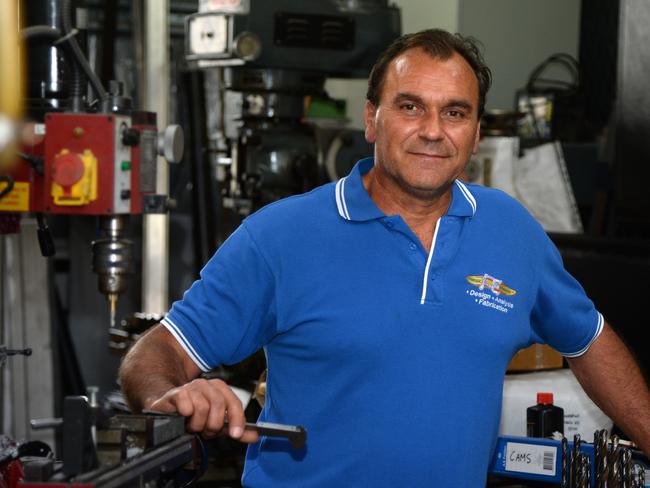So just what’s the big idea anyway?
SOME people have good ideas. Some can turn them into projects, then into successful ventures. There are few people, though, who can do all three.

SOME people have good ideas. Some people can turn good ideas into projects. And some people turn projects into successful commercial ventures. There are few people, though, who can do all three.
This is the problem for so many innovators. Some fail because they don’t sufficiently protect their inventions with patents; others fail because they don’t have enough capital to see it through; others because of mismanagement and some because they have a greater altruistic motive.
The classic of the last cause is Sir Tim Berners-Lee, credited with the invention of the world wide web. Sir Tim wanted to help scientists at the Swiss-based laboratory CERN (the European Organisation for Nuclear Research and home of the Large Hadron Collider) to share their research. But he understood the secret of his invention was to make it freely available, and not to lock it up. The benefit to global business and community is in the trillions of dollars.
Closer to home — and also associated with the internet — CSIRO scientists John O’Sullivan, Terry Percival, Diet Ostry, Graham Daniels and John Deane are credited with inventing wi-fi technology. Despite its breakthrough — and patent protection — more than a dozen multinational technology companies ripped off the idea with impunity.
Around five years ago, the Australian government settled for $220 million with a group of computer manufacturers and mobile phone companies. It shows, even the Australian government must defend itself against big businesses prepared to exploit innovation.
Therefore, to succeed, inventors and small businesses either need patrons or products so good that they generate immediate cashflow. They also need to be protected. The death of so many small businesses is because the gestation period of their invention drains cashflow before the payback period.
The good news is that more banks and investors are focusing on innovation of the small business community, providing capital and loans where they did not before. Though the risks are great for investors, the message is getting through that the economy will stagnate without innovation.
But this also places responsibility on inventors and innovators. They must be more willing to share their knowledge and to understand that 100 per cent control of a business is worth nothing if the net worth is still zero. To share can create more profit for the control-hungry inventor.
That said, the pool of potential investors and angel-investors is still infested with opportunists that will rip-off innovators through dodgy loan schemes. The worst even relaunch the prospective invention through a new operation. There is little regulation and the inexperienced must beware: the chances of being ripped off are significant.
ENGINEER SOLVING CLIENTS’ PROBLEMS
BHP Billiton, CSIRO, the Australian Defence Force, BlueScope and Aldi: not bad clients for a small business. Even better when you can claim them as customers after just eight years of operation.
But that’s what Daryl Perusic and his Perusic Engineering have done. Like many other mechanical engineers, the trick is to solve other companies’ production problems and to design and fabricate devices that provide the answers.
The list of clients is also a testament to the type of organisations prepared to spend development dollars to solve their production problems.

But corporate spending ebbs and wanes. That’s what Daryl started to see earlier this year. So to take the business one step further, successful engineers are likely to create their own products that generate an annuity-stream cash flow to even out the financial bumps.
Based on his long-term love of motorsport, he has designed and begun manufacturing a new pedal box assembly — after spending weeks adapting other similar components to fit into race cars. It’s early days, but he’s hoping his one-size fits all solution can become the standard in motorsport.
It’s a long way from Daryl’s dark-days. In 1992, while working as a roofing contractor, a gust of wind blew roof panels he was holding, ripping his shoulders apart and injuring his neck. Stripped of his livelihood and battling a claim through Work Cover, he struggled to support his family with no income and mounting medical bills. “We almost lost the house four times in that two years,” he recalls.
The accident forced him to reassess his skills, and to rely on his natural curiosity as a kid.
“I was always making things. Even as a kid, I made my own toys. Dad would go to the tip and I’d bring back stuff and make things. My first pushbike was made from three busted ones.”
Daryl was forced to use that ingenuity to create work for himself. He eventually settled on an engineering business. “One of my major clients had specific requirements and they were relying on me to create solutions. It’s interesting work.”
But as some work waned, he was again forced to innovate to create his own products. And this time, he hopes, the innovation will pay off.




